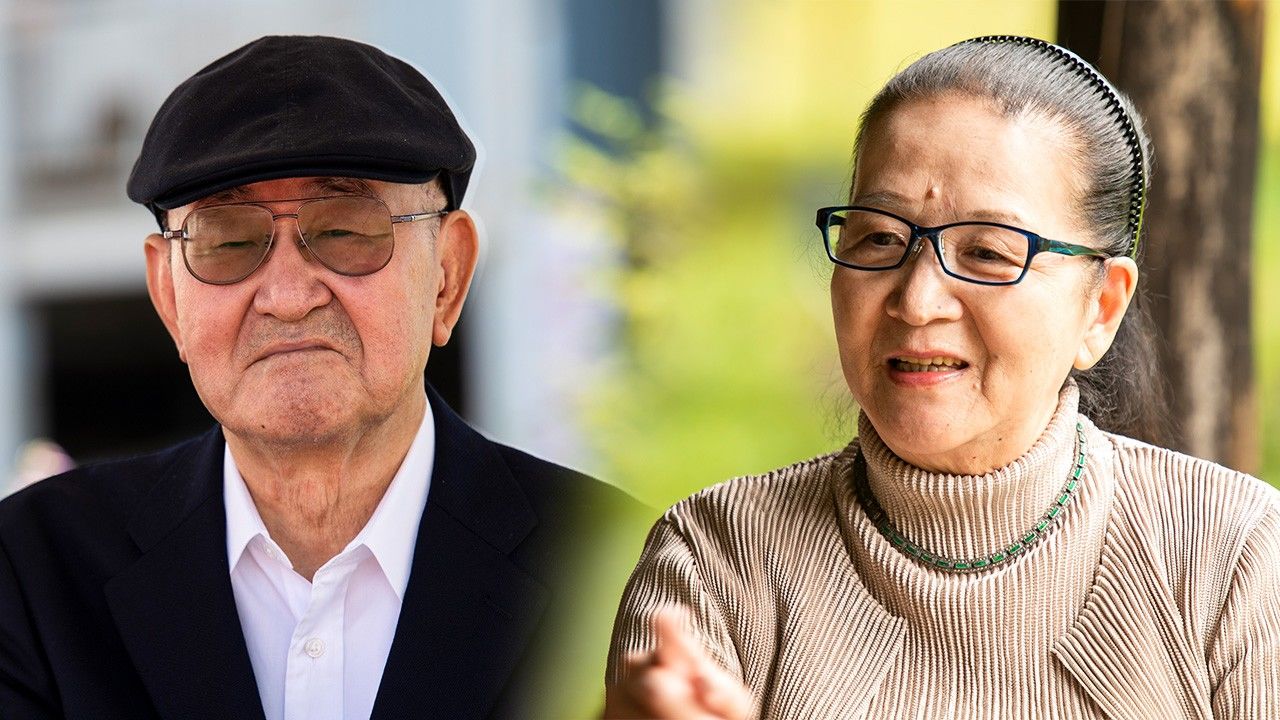
Ozu Yasujirō: A Director’s Time in Tateshina
Looking Behind the Camera: Ozu Yasujirō and His Family
Culture Cinema History People- English
- 日本語
- 简体字
- 繁體字
- Français
- Español
- العربية
- Русский
Today, now that 120 years have passed since Ozu Yasujirō’s birth and 60 years since his death, the time seems right to examine the renowned filmmaker’s life. Interviews with members of his family uncover little-known aspects of the Japanese director’s personality and provide fresh insights into his cinematic creations.
Nagai Hideyuki, now in his eighties, explores the everyday life of the renowned director—his uncle—going beyond his fame. The director was like a paternal figure to him—a beloved family man who also captured the Japan of his time on celluloid. For Ozu Akiko, memories of her uncle go back to her earliest years. Growing up with Ozu takes us back to the lively Shōwa period (1926–89), a turbulent era in Japanese history that also marked a turning point in the cinematic art world.
Born 120 Years Ago
Ozu was born on December 12, 1903, in a working-class riverside neighborhood in Tokyo, on the banks of the Fukagawa. The second of five siblings, he spent his childhood in the capital with his mother Asae and his older brother Shin’ichi, while his father, Toranosuke, sold a highly sought-after product, sardine flour, at the time used as a fertilizer for the fields, particularly for cotton cultivation.
In 1913 the family left the capital for Matsusaka, his father’s hometown in Mie Prefecture, where Ozu finished school, practiced jūdō, and sketched drawings and diaries. As a teenager, he would sneak off to the first movie theaters to enjoy American silent films. After finishing high school, he disobeyed his father’s wishes that he attend university and instead worked as a substitute teacher in a rural school. Eventually, in 1923, he headed back to Tokyo, where he decided to try his luck in the film industry.
Although he did not come from a family of artists, his nephew Nagai Hideyuki believes that he was “born at a good time” and that his vocation was the result of the era in which he lived. Nonetheless, his life was not without its difficulties either. He entered the Sōchiku Studio aiming to work as a director, but was forced to put in his time as an assistant director first. “He put a lot of effort into his work,” says Nagai. In the end, his efforts resulted in more than 50 films, from a silent film debut with Zange no yaiba (Sword of Penitence, 1927) to his last color work, Sanma no aji (An Autumn Afternoon, 1962).
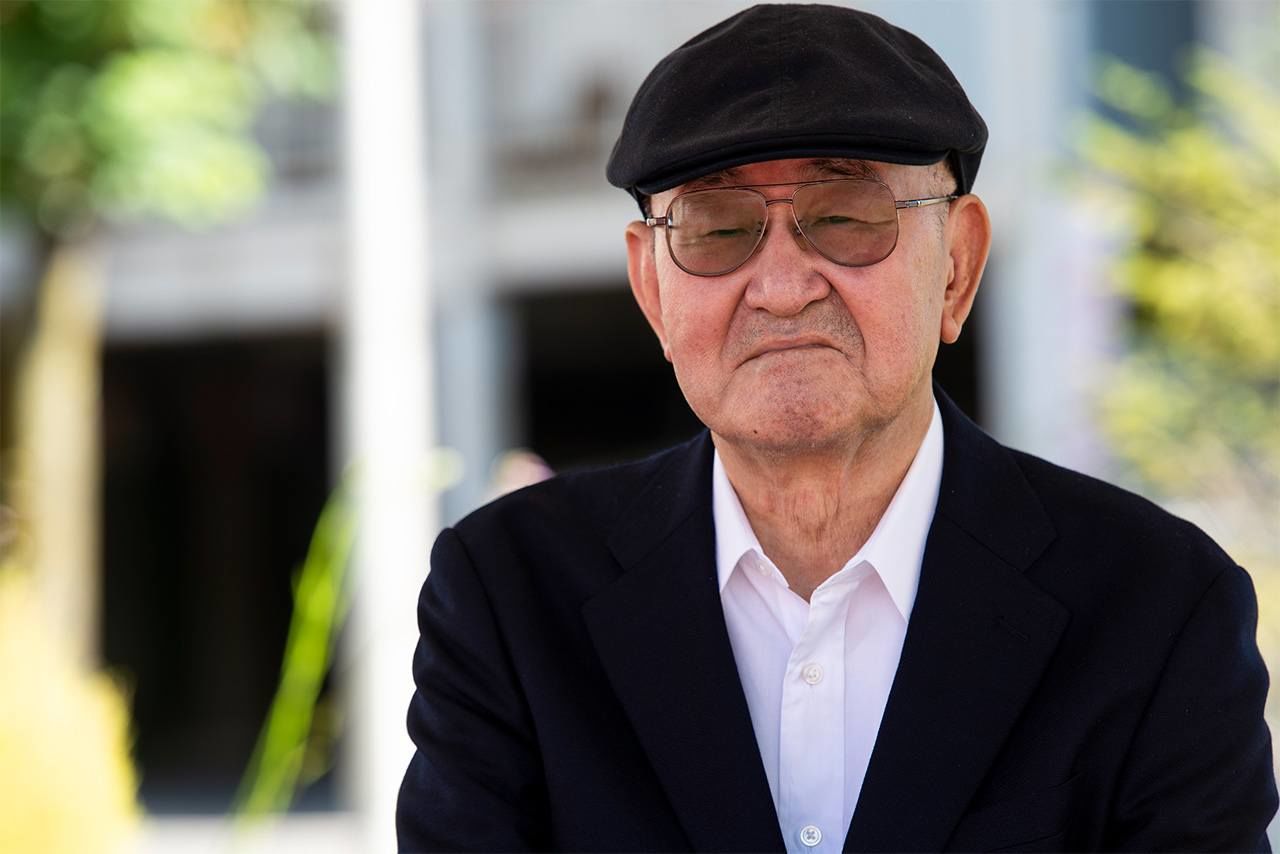
Nagai Hideyuki, the nephew of Ozu Yasujirō, participated in the Ozu Yasujirō Memorial Film Festival held in Tateshina, Nagano Prefecture, in 2023. (© Kodera Kei)
Ozu’s Children
His nephew and niece remember him as kind and funny. Ozu had no children of his own, but other youngsters surrounded him, and the vision he had of childhood was reflected in the language of his films, as in Banshun (Late Spring, 1949) or Ohayō (Good Morning, 1959).
Nagai Hideyuki is the son of Toki, Ozu’s younger sister and the third in the family. Toki, who was four years younger than Ozu, was widowed at a young age; “Yasujirō was a great support to her,” Nagai recalls. Ozu Akiko confirms what her older cousin says. Akiko is the daughter of Nobuzō, the director’s younger brother, and her first memory of her uncle dates back to shortly after World War II, when she was very young.
Akiko recalls that her uncle returned from Singapore in February 1946, after the war. He went straight to his neighborhood in search of his mother, but she had left Tokyo after the Great Tokyo Air Raid of March 10, 1945, and was now living with her daughter in Noda, a farming town in Chiba Prefecture two hours by train from the capital. Ozu was told where to find them and after spending the night in Tokyo, he went there.
Ozu spent the early postwar years in this town with the extended family. At nightfall, they would gather around a bottle of sake to chat. Little Akiko would often curl up on her uncle’s knees like a cat. He would dip his finger in the sake and make her taste it as a game: “He behaved like a mischievous child, playing with us on the same level.”
Ozu played a significant role in the lives of the younger members of the family, especially Nagai: “His principles in life were not to bother others and not to tell lies. He had great morals and taught me many things, but perhaps those were the most important.”
As a young man, Nagai recalls, his uncle would invite him to go out and drink together. “We talked a lot. He’d recommend books to me. Natsume Sōseki, for example. Also movies that I didn’t understand very well.” As a 19-year-old college student, Nagai visited him numerous times in what would be Ozu’s last creative haven, a volcanic spot called Tateshina, Nagano Prefecture.
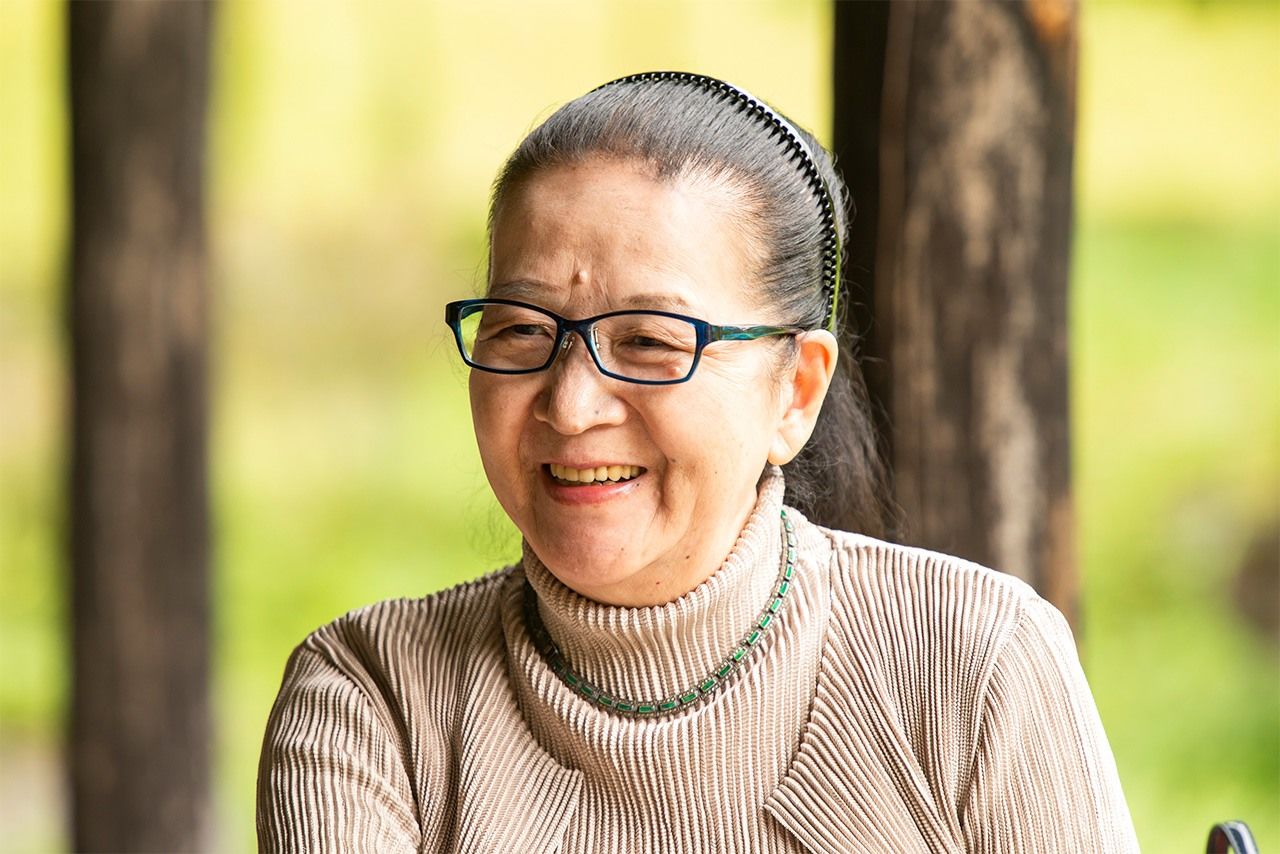
Ozu Akiko at the Mugeisō villa in Tateshina, during the interview. (© Kodera Kei)
The Taste of Sake
Ozu was in the habit of writing down the names and addresses of the restaurants he frequented in Tokyo in a collection that he himself baptized as his “Gourmet Notebooks.” This practice may suggest a hedonistic indulgence, but it could not be any farther from the truth.
Those who shared a table with him, like Nagai, had another experience: one in which they enjoyed typical Japanese dishes in popular neighborhoods of the capital or in Kamakura, a coastal city in Kanagawa Prefecture, where the filmmaker moved in 1952.
Traveling throughout Tokyo, either by train or in a car of a friend of the director, the uncle and nephew embarked on a quest to a celebrated eel restaurant in Tokyo’s northern Kitasenjū district, indulging in a dish believed to increase longevity in Japan. On other occasions they would seek out a delicious tonkatsu at Hōraiya, a restaurant located in the bustling Okachimachi neighborhood where a colleague and fellow director, Ikeda Tadao, resided. Ozu would mention these juicy breaded pork fillets in Akibiyori (Late Autumn, 1960) and An Autumn Afternoon.
Ozu was a regular at a sushi restaurant near Kamakura Station, but in Nagai’s recollection, “he drank more than he ate.” It is widely known that Ozu was fond of sake, particularly if the drinking was in good company. “He didn’t go to fancy places. What he liked was to get together with people. He enjoyed being with others.”
Ozu’s Muses
“I think he was able to do everything he did because he was single,” Nagai responds to the question of why the filmmaker never married, a recurring inquiry in the media for years. But that doesn’t mean he didn’t have affairs. Different women also played a fundamental role in his life and work.
Asae’s maternal figure played a significant role in the creator’s life, a close relationship that lasted until the end of his days. Mother and son lived under the same roof most of the time and died barely a year apart.
There were other family circumstances as well. After an older brother married, Ozu soon witnessed the complex relationship between mother-in-law and daughter-in-law. In traditional Japan, the eldest son was responsible for the care of his parents, but it was Yasujirō who closely watched over his mother.
When Ozu was three years old, meningitis put him between life and death, and Asae devoted body and soul to his recovery, something for which the filmmaker remained deeply grateful the rest of his life. Ozu Akiko also believes that although his uncle liked to be around people, he was very shy at heart. As far as she knows, he liked at least three girls, “but he was incapable of declaring his love, and in the meantime others would go ahead of him.”
On the professional side, meanwhile, “Ozu did not like to establish personal relationships with actresses,” says Nagai. Toward the end of his years he had a close relationship with Murakami Shigeko, an accordionist who enlivened a scene in Tokyo Story. “She was a very dear person,” the nephew recalls of this late love.
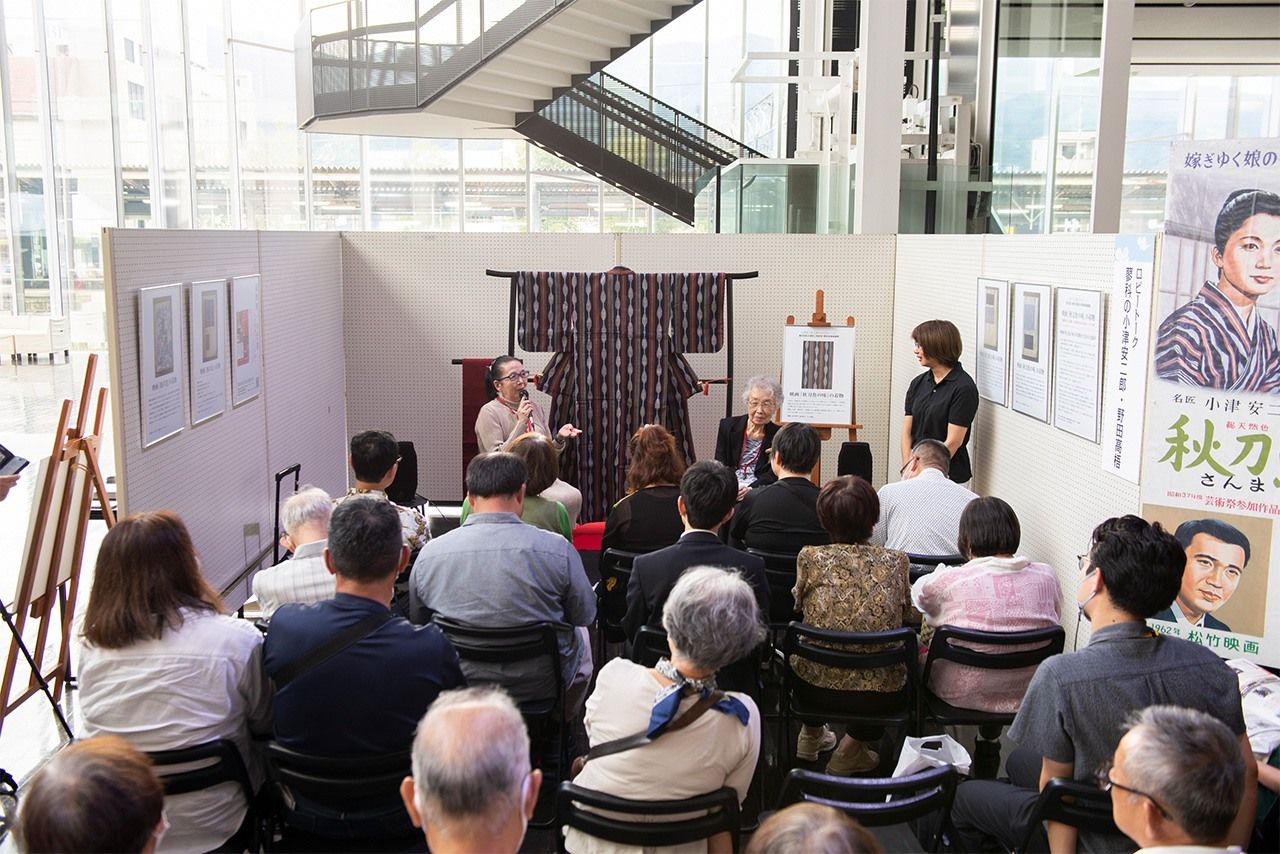
Ozu Akiko talks about her uncle at an event alongside Yamashita Kazuko, also Ozu’s niece, at the Ozu Yasujirō Memorial Film Festival in Tateshina in 2023. (© Kodera Kei)
The actress Hara Setsuko is the female figure most associated with the director. The actress starred in the trilogy of the ungovernable Noriko—the 1949 Late Spring, the 1951 Bakushū (Early Summer), and the 1953 Tokyo Story—immortalizing actress and director together in the history of cinema. Beyond the celluloid, there were rumors of a possible romantic relationship between the actress and the director, but “he respected her very much and never had any intention of marrying her. They were both film professionals,” explains Nagai.
Hara Setsuko also never married and, surprisingly, retired upon Ozu’s passing in 1963, sparking new rumors and fueling a mystery that no one has managed to solve. She withdrew from the spotlight and refused to grant any interviews, including to her biographer, who tried for years to unveil her reasons.
For Nagai, the answer is simple: “Hara loved working with Ozu because he brought out the best in her.” The two were 12 years apart, so when he died she was already older, he explains. “Unfortunately, older for the film industry,” he clarifies. “She was well over forty, and she retired because she didn’t want to be in inferior movies. Her career had reached its peak.”
In Nagai’s opinion, the actress was ahead of her time and had a significant impact in a male-dominated industry. “Credit is given to Ozu-sensei, but she was very good and had her own merit.” Nagai’s critique addresses the past and current film industry. In 2015, when the actress passed away at the age of 95, Nagai lamented the poor media coverage in Japan compared to the international attention she received.
The Last Memories
There were anecdotes with other great Japanese filmmakers. “Kurosawa Akira felt sympathy for Ozu, telling him that he had liked Tokyo Story very much,” recalls the nephew. The film also resonated with the director Yamada Yōji, who would go to Kurosawa’s house to revisit the film together. In 2013, Yamada released Tokyo kazoku (Tokyo Family), a contemporary tribute to that past.
As a human being, “he was humble and didn’t act in a pretentious manner. He was considerate and kind.” That’s how Nagai would like him to be remembered, “although he also liked dirty jokes,” he jests.
Ozu was a frugal and vital man, and the numerous awards he received in Japan did not affect his work. According to Nagai, his last years composing scripts in the middle of a forest in Tateshina were a very good period. “He was a man of his often tough era, who did not mind living in the wilderness and experiencing its harshness.”
During the winter, he generated ideas, and in the summer, he filmed. For almost a decade, he and his colleague and screenwriter, Noda Kōgo, followed a cycle of creation and rest at a villa located in the mountains of Nagano, still preserved today. Even though these landscapes were never seen in his work, “Tateshina was always in his heart.“
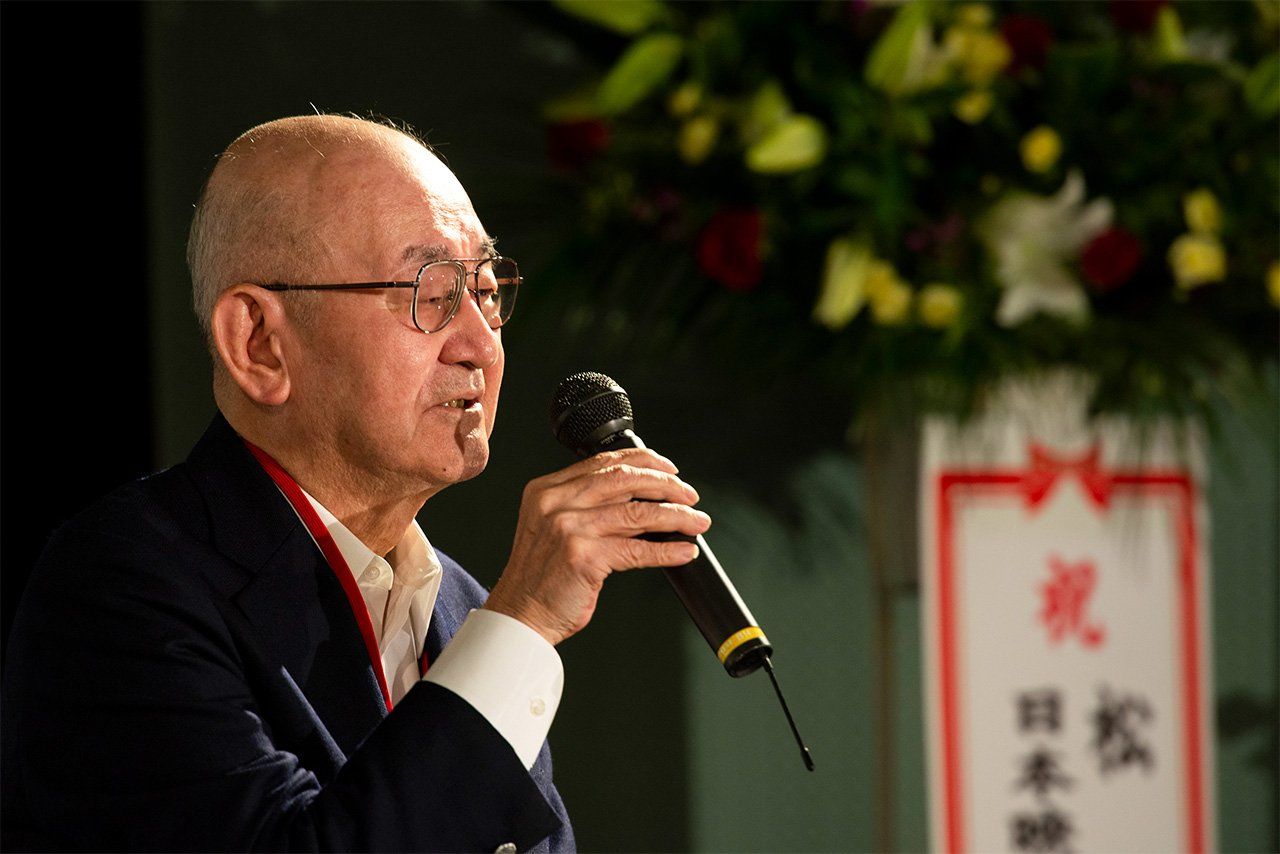
Nagai Hideyuki talks about his uncle during a film presentation at the Ozu Yasujirō Memorial Film Festival, held annually in the city of Chino, Nagano, since 1998. (© Kodera Kei)
Nagai’s final memory with his uncle in Tateshina goes back to 1963, when for the first time a television set arrived in Unkosō, a nearby villa owned by the screenwriter Noda. “We all watched the public channel together on this small TV.”
Higanbana, the Equinox Flower
Ozu Akiko also participates every year in the Tateshina film festival that pays tribute to the creator. Autumn 2023 was no exception, and during the event she visited Mugeisō, the director’s last working villa. Red spider lilies bloom in the garden—a flower that the filmmaker particularly liked, among other reasons, because of its color.
The same intense red was featured in his color films and the flower’s Japanese name even became the title of a 1958 film, Higanbana. What did it represent in Ozu’s life? His niece Akiko believes that the key lies in a diary entry dated September 25, 1927. That day Ozu was traveling from his grandmother’s house to Hisai Station in Tsu, Mie Prefecture, where he spent part of his younger years. As the train moved away, Ozu could see the red flowers, higanbana, blooming on both sides of the tracks.
This flower, also known as “equinox flower,” evokes lost memories in Japan. It was Akiko’s idea to bring higanbana to Ozu’s last creative haven so they can burst into red every year when autumn arrives.
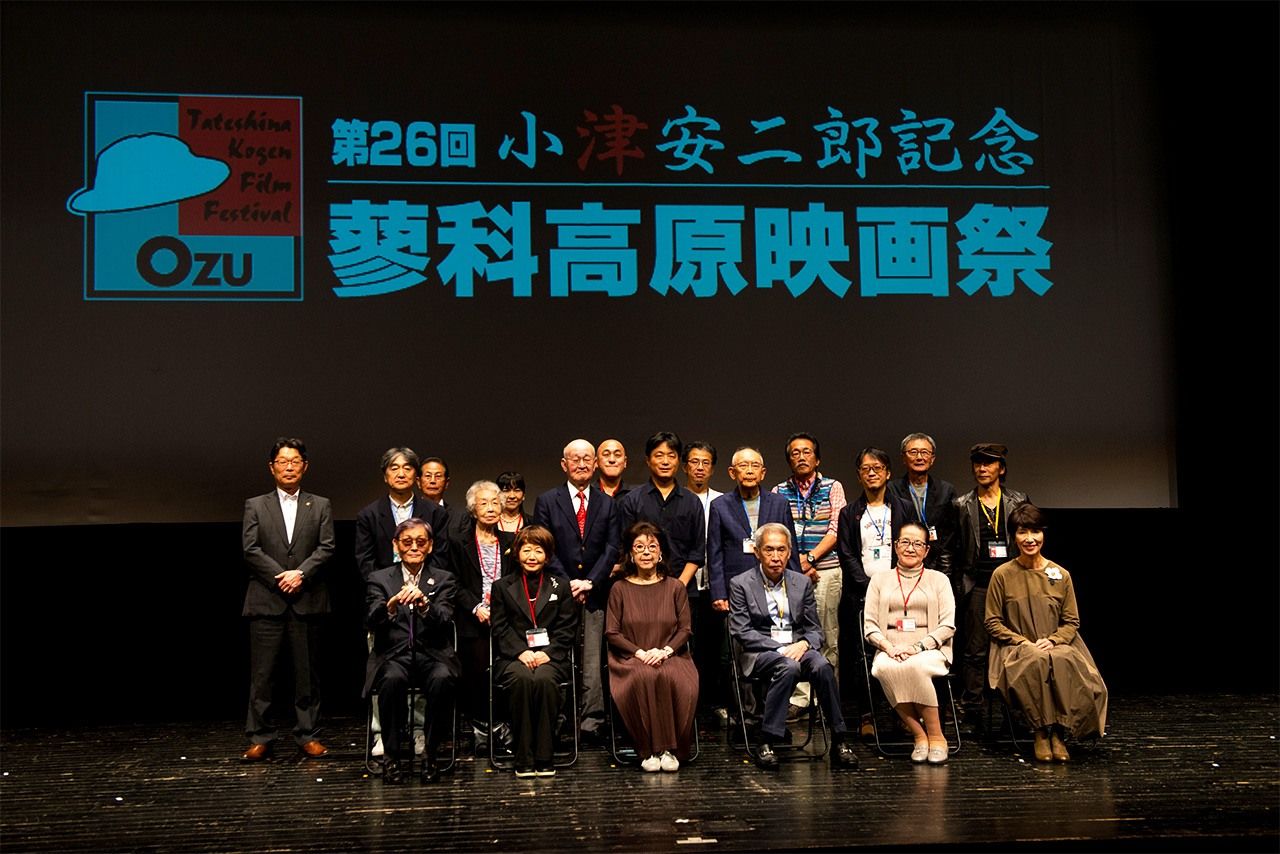
Nagai Hideyuki (center, second row) and Ozu Akiko (second from right, front row) during a group photo of participants at the Ozu Yasujirō Memorial Film Festival at Tateshina in September 2023. (© Kodera Kei)
(Originally written in Spanish. Banner photo: Ozu Yasujirō's nephew and niece, Nagai Hideyuki and Ozu Akiko. © Kodera Kei.)